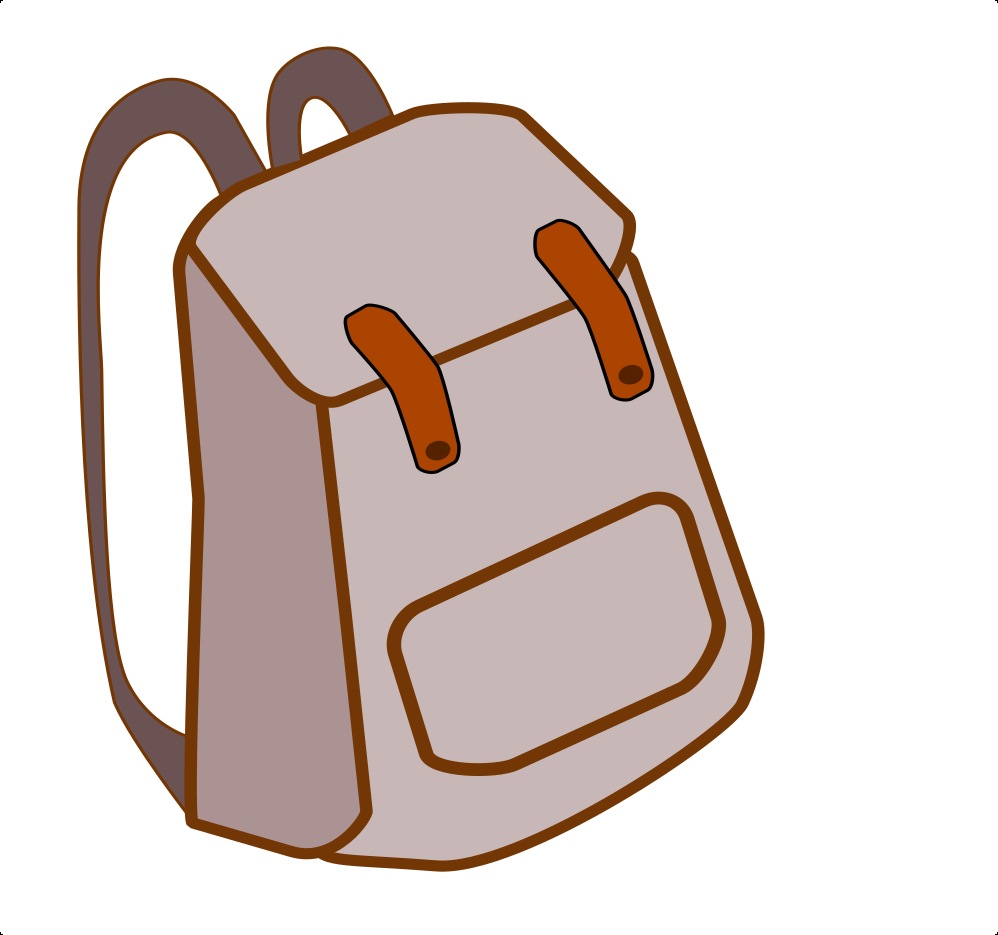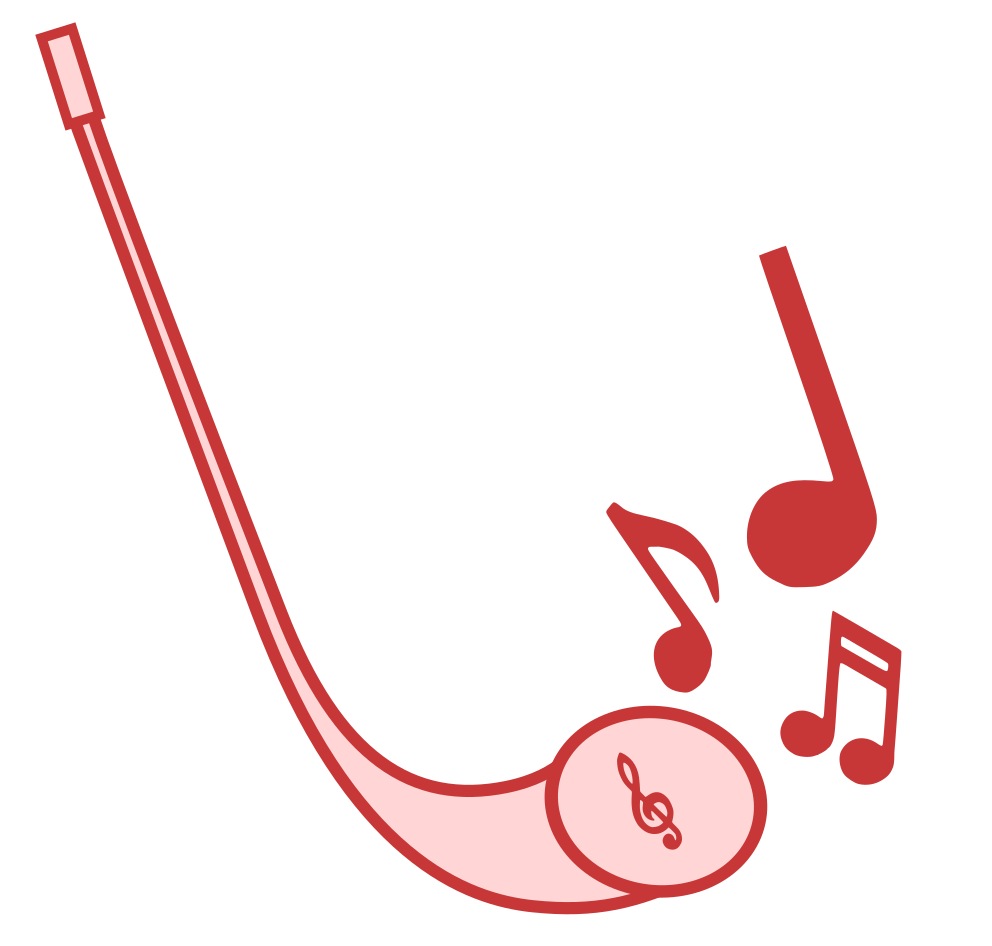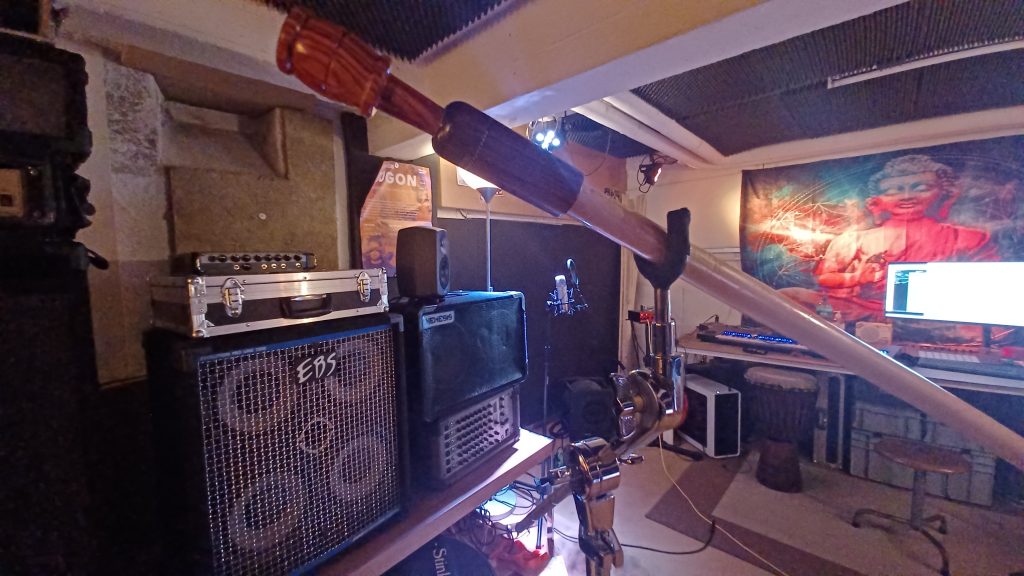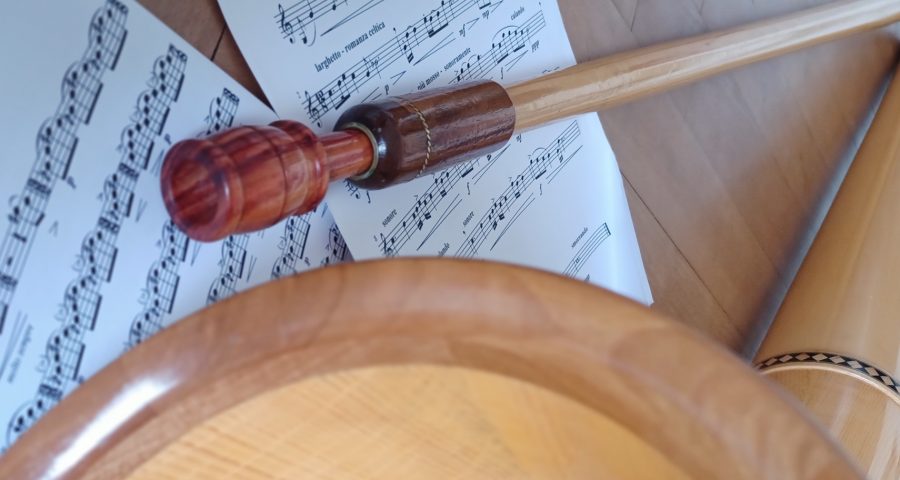In this lesson, you produce tones of different pitch and get to know the contemporary alphorn scene.
 Buzzing
Buzzing
Every musical instrument needs two components to produce a sound: a generator (something that produces vibrations) and a resonator (typically a voluminous body that amplifies the vibrations into an audible sound). In stringed instruments, the strings function as a generator and the body as a resonator. The same with guitars and the piano (where a hammer triggers the vibration of the strings). In woodwinds, viberations are generated by a reed of wood. In all of these examples, the generator is part of the instrument. In the case of the alphorn, on the other hand, you have to generate the vibrations yourself. More specifically, it is your lips that act as the generator; the alphorn itself is nothing more than a resonator.
You generate the vibrations by buzzing. When buzzing, you blow air through your tensed lips. In this interplay of air pressure and muscle tension, your lips open and close at high frequency – they begin to vibrate. This creates a sound reminiscent of a fart. This is the same physical phenomenon as when you slowly deflate a balloon by pulling the valve wide.
If you want to play the alphorn, you first have to learn how to buzz. Check out the video below for a good guide:
You can buzz in different ways
- Just with your lips. With this simplest variant you modulate the tones without the potentially disturbing influence of the mouthpiece. This will train your lip muscles and at the same time prevent high lip pressure.
- With the mouthpiece on your lips. Simple – many brass players always carry a mouthpiece with them. Sounds flat though.
- With a buzzer. Buzzers are short tubes that act as mini-resonators to amplify the sound. The cheapest solution is a 10cm long piece of garden hose, into which you put your mouthpiece. Functionally equivalent but haptically nobler are Buzz-R by Markus Arnold and Buzzard by Warburton.. Finally, there is also the B.E.R.P. by the berp, which can be attached to the instrument.
As a basic exercise, continuously change the pitch from low to high and back to low and so on (sometimes called “sirens”). The terms “low” and “high” are somewhat unfortunate, because what you try to achieve is a movement from voluminous-open-large (“low”) to compact-poisonous-fine (“high”). It’s helpful to keep this in mind when buzzing. You can internalize the movement, for example by standing up like a snarling bear on the “low” notes and contracting like a hissing snake on the “high” notes. Or you follow the flight of an acrobatic airplane, whose “lowest” note sounds far up in the sky, before it becomes increasingly shrill in the nosedive, only to then climb back up into the sky after the “highest” note.
Buzzing is the basis of playing the alphorn, and you should buzz as much as possible. The good thing is, you can buzz pretty much anywhere – in the car, on your bike, in the elevator, in the shower, while shopping, at board meetings… there are really no limits to buzzing until those around you start asking serious questions about your mental state; that would be the moment to buzz a bit less often. But don’t underestimate the buzz. It’s not just a beginner’s exercise! Almost all professional brass players build a buzz block into their daily training routine.
![]() Further information
Further information
- If you want to see what the lip vibration looks like in super slow motion, here‘s a video. LipCam have developed a special camera to capture brass players’ lips while playing the instrument; I find the video by Salaputia Brass particularly amusing.
- You can find dozens of detailed videos about buzzing under “buzzing” on YouTube. As a next step, I can recommend this and this video by Charlie Porter.
 Hit the Pitch!
Hit the Pitch!
Objective: You develop your tonal imagination and use it to hit different pitches.
Just as you generate different pitches when buzzing, you can do the same on the alphorn. This is largely intuitive: imagine the note before you blow it, then play it. Do this alone on your alphorn first. Explore your range – how low and how high you can get without the sound losing quality.
Then use the following audio files. Listen to the tone or the short tone sequences and then play them back. Go through this exercise several times until you have mastered it safely and flawlessly.
 Aids
Aids
In addition to the alphorn and mouthpiece, you may want to consider the following investments:
- Metronome. A metronome gives you a steady pulse. This allows you to stay within the specified tempo while making music. It’s not really that important with alphorn pieces – as Gassmann said, you should play them by feel and not strictly to the beat. But when practicing, the metronome is essential, as it relentlessly forces you to be precise. A cheap model like the Korg MA-2 is sufficient. Of course you can also use an app (e.g. the Pro Metronome) or an online metronome.
- Tuner. The tuner is the little machine with perfect pitch. It tells you what note you are currently playing. Since you cannot check the intonation of the alphorn by finger position, this is very useful when rehearsing new pieces. There are models from 5 CHF, but as far as I know you have to reach for at least the Korg OT 120 if you want to adjust the tuning to your alphorn (cheap tuners all assume a tuning in C). I believe that an app (e.g. Cleartune) is probably the better solution. There are also apps that combine metronome and tuner (e.g. Soundcorset).
- Music stand. Once you start working with sheet music, a music stand is essential. For at home you should get a model that is as stable as possible with a fixed shelf (e.g. this model from K&M). It gets more complicated in the field. I often see music holders attached to the alphorn (such as Odi’s model). This works properly, but then requires appropriately formatted sheet music; if several pieces are played at a concert, things quickly become chaotic with these brackets. Some alphorn players have therefore upgraded to tablets or e-books; the biggest challenge there are raindrops that change sides at the wrong moment.
- Musician chair. If you practice regularly and for a long time, you might want to buy a musician’s chair (e.g. this model from K&M). Unlike regular chairs, you sit at the same angle to the horn as when standing, and it’s also much easier to alternate between standing and sitting. Alternatively, a stable bar stool will do.
- Mute. If you don’t have a neighborhood-friendly band room, you may want to look into mutes. See here for a comparison of four popular models.
- Alphorn holder. On various occasions I have seen alphorn rests that are attached to the music stand (e.g. Odi’s model) – I don’t quite see their use; it may be appreciated by wind players with disc hernias. On the other hand, I had a metal worker weld a hook to a drum cymbal stand. This alphorn holder is so solid that I can play alphorn hands-free with it – just as an idea…

 The Contemporary Alphorn Scene
The Contemporary Alphorn Scene
Note: Even more than the rest of this introduction, this section is work-in-progress and does not claim to be complete. I am very grateful for constructive criticism and additions!
Nobody knows how many alphorn players there are in the world. Apart from a few Facebook groups (like this one), there is no global alphorn association. Let’s assume that in Switzerland almost half are registered in the Federal Yodelling Association (1,800). Then we would have maybe 4,000 alphorn players in this country. If we add another 2,000 for neighboring countries and 1,000 for the rest of the world, we end up with 7,000 globally. I suspect the correct figure is somewhere between 5’000-8’000 active alphorn blowers – less than 0.0001% (1/1 million) of the world population. This rare species is divided into the following sub-cultures:
Orthodox
The Federal Yodelling Association and its five regional sub-associations see themselves as guardians of the Swiss alphorn tradition, yodelling and flag-waving. They organize regional yodelling festivals and every three years the big federal yodelling festival. They also take part in the Unspunnen Festival as co-organizers. At these festivals there is always an alphorn blowing competition. A jury assesses the presentations in solo, duo, trio, quartet and larger groups on a scale of 1 (very good) – 4 (unsatisfactory). Participants collect the badges of the yodel festivals and put them on their hats. These festivals are more about the promotion of regional customs than about musical experiences. That is why playing in a “correct” traditional costume is prescribed (even if no one played in costume until the early 20th century). Women in pants will be disqualified. Metal mouthpieces are forbidden (although still common in the 19th century and even advocated by Gassmann), as are formations with alphorns of different pitches (although still practiced by Huber in alphorn courses in the mid-19th century). The duration of the performance is also clearly regulated. According to the guiding principles, “traditional and authentic playing” and “alphorn music related to Swiss tradition” are encouraged. Exactly what that means is not made clear.
Traditional
Most alphorn blowers can be classified as “traditional”. Their aesthetic – dress code and type of music played – is similar to that of the yodel association. Some of the groups also play at the yodel festivals. But they are not quite as orthodox about it: They have an informal interpretation about traditional costumes (sometimes an edelweiss shirt is enough, even women in pants are tolerated). The repertoire also allows for more modern pieces, and sometimes instruments of different tunings are used. This part of the scene also organizes alphorn meetings (the best known is the Festival International de Cor des Alpes de Nendaz) and blows there in competition. But the focus is more on the musica and social aspects rather than regional customs.
The traditional subspecies includes an very large number of amateur groups and formations that appear at village festivals, conservative party meetings, sporting events, farmer markets, August 1st celebrations (the Swiss national holiday), etc. There are also a few professionals among them: I would assign the group Alphorn Experience by Mike Maurer, I Cornuti from Emmental or Roland Schwab to the traditional scene. The Alpine Sisters are interesting – also as an example of technically outstanding, classically trained alphorn players with a migration background. Others: Adolf Zobrist (3 times winner at Nendaz), Samuel Kunz, Peter Baumann (the Alphornpuma), Gaby und Dieter Lätsch, Donnacor.
Classical Music
Since Leopold Mozart’s Sinfonia Pastorella, the alphorn has become an integral part of classical music. Jozsef Molnar, who originally came from Hungary and died in 2022, is considered a pioneer in Switzerland. He became known, among other things, with the recording of the concerto by Jean Daetwyler. Matthias Kofmehl was a horn player in the Zürich Tonhalle, where he plays Carl Rütti’s alphorn concertos with great success; more recently he directed the alphorn part in the production of Rütti’s Mysterium Montis. Of the younger generation of performers, Martin Roos deserves a mention. In Germany, there is Rainer Baretsch and Ana Stanković. Also in France (e.g.. Hervé Joulain) und Belgium (e.g. Jean-Pierre Dassonville) the alphorn found its place in classical orchestras. Classic alphorn players usually have training on the horn. They dress in tails or short black dresses instead of traditional costumes.
The organ plays a special role in classical alphorn music. Numerous pieces were combined for this combination. Apparently, the church acoustics are well suited for the alphorn – maybe it’s just an overlapping audience target group.
![]() Further information
Further information
- Frances Jones has written a PhD on the alphorn in classical music and has published various books and articles.
- Here an interesting example for the use of alphorn in classical music.
Pop and Rock Music
Swiss Lady, with which the Pepe Lienhard Band represented Switzerland at the Eurovision competition in 1977, is considered by nostalgics to be a monument of Swissness. The Iranian trumpeter Mostafa Kafa’i Azimi played the emblematic alphorn part on an A flat horn. Since then, the alphorn has appeared again and again in popular and pop music. Currently best known is Lisa Stoll. Other examples: Walti Sigrist with his “Superhorn”, Kudi Baumgartner, AlpPan, alpcologne from Germany, Rupert Hofmann (who also plays classical music), Dieter Mangold.
Lochus Alphorn Quartett of Erwin Füchslin mixes the alphorn into a light multi-cultural cocktail. The Jacaranda Ensemble and Franz Schüsseles trio frapapepi follow a similar concept.
Eliana Bürki played a more rocky alphorn before her early death in 2023. Enrico Lenzin, known to many through his appearance in a casting show, plays the alphorn with a looper and in combination with various instruments. Sunatiba presents itself similarly.
Jazz
Hans Kennel, who died in 2021, is considered the pioneer of the alphorn in jazz. Best known is his group Mytha. Roland Dahinden (who you know from the buzzing video above) has performed together with Kennel in Habarigani and sometimes makes avant-garde appearances with the alphorn; see also his Trio Bann. Robert Morgenthaler also has an influence on the scene. He initiated the Intitiator von Roots of Communication, taught improvisation at the Bern Jazz School and, among other things, produces modern alphorn music in the Trio Echo vom Zürihorn. The Russian Arkady Shilkloper should also be mentioned here; some would consider him the Alphorn World Champion due to his spectacular virtuosity (here in a longer portrait by SWR). I also like Matthias Schriefl who is always a little funny.
Modern Alphorn
Artists like Christine Lauterburg and Erika Stucky have been scratching the outdated image of Swiss folk music for decades. While the wave of new folk music seems to have leveled off somewhat, interest has remained in neo-traditional artists who want to evade the embrace of apologists for spiritual national defense and seek to explore new forms. This development did not stop at the alphorn. The best-known exponent of this direction is Balthasar Streiff with his alphorn quartet hornroh. The Austrian jazz musician Thomas Heel explores the possibilities of the alpine horn without blinkers in his musical work and his doctoral thesis. I would also count the Frenchman Alexandre Jous with his project “Chaque montagne a droit à sa musique” among the modern alphorn players.
Barbarians and exotics
In neighboring countries (Austria, southern Germany, France and Italy) there are numerous alphorn formations that would be considered part of the traditional scene. They also come in a folksy look – with Lederhosen, as mountain troops or other local color. To my knowledge, however, only Baden Württemberg has a institutionalized alphorn szene similar to Switzerland. Examples: Esslinger Alphörner, Stockweg Alphorn Formation, Eifeler Alphornissen, Alphorn am Main, Mutzbacher Alphornbläser, Bodensee Alphorn-Trio, Hafenstoaner Alphornbläser (who build their own alphorns), Meckalp (Germany), Montafoner Alphornfreunde, (Austria), Alpinus, Les Entubés, Les Sonneurs de Savoye (France), Alphornduo Fortissimo (Holland), Les Coralpins Gaumais (Belgium).
Berliner has a lively alphorn scene around the Berliner Alphornorchester and alphorn.berlin; they also play an urban repertoire by Andreas Frey.
There has been a lively alphorn movement in Japan for a long time; they all build their own alphorns. With the Alphorn Institute, the North American alphorn scene has a professional center of gravity; its origins go back to Bill Hopson, a Canadian who stirred up the Swiss Orthodox two decades ago. Swiss traditionalists may struggle with the aesthetics that are heavily influenced by lederhosen and Oktoberfests (see for example Alpensong, Wasatch Alphorns, Salzburger Echo, Sierra Alphorn Players).
![]() Further information
Further information
- Charlotte Vignau (2013). Modernity, Complex Societies and The Alphorn. Music-ethnological study of the alphorn phenomenon with case studies on alphorn scenes in Japan and Holland.
- Maureen Kelly (2021). The Alphorn in North America: “Blown Yodeling” Within A Transnational Community. Master’s thesis on the alphorn scene in North America (freely available online).
- On Playsuisse (available only in Switzerland or via VPN) the documentary Banzai Switzerland! shows the journey of the Japanese Tamagawa Alphorn Club to Switzerland. The movie is in Italian with German and French subtitles – but worth a look even if you don’t speak any of these languages.
